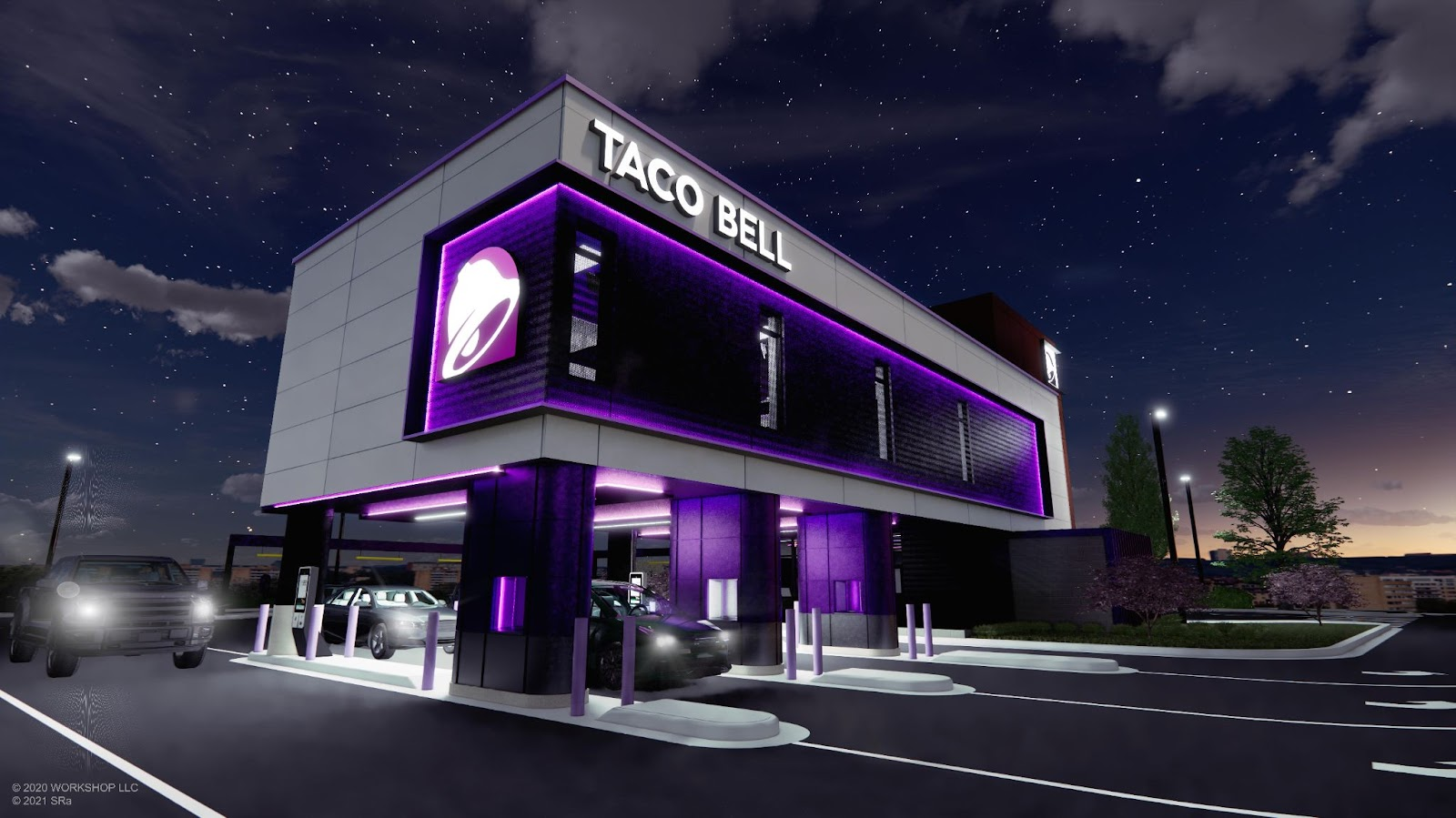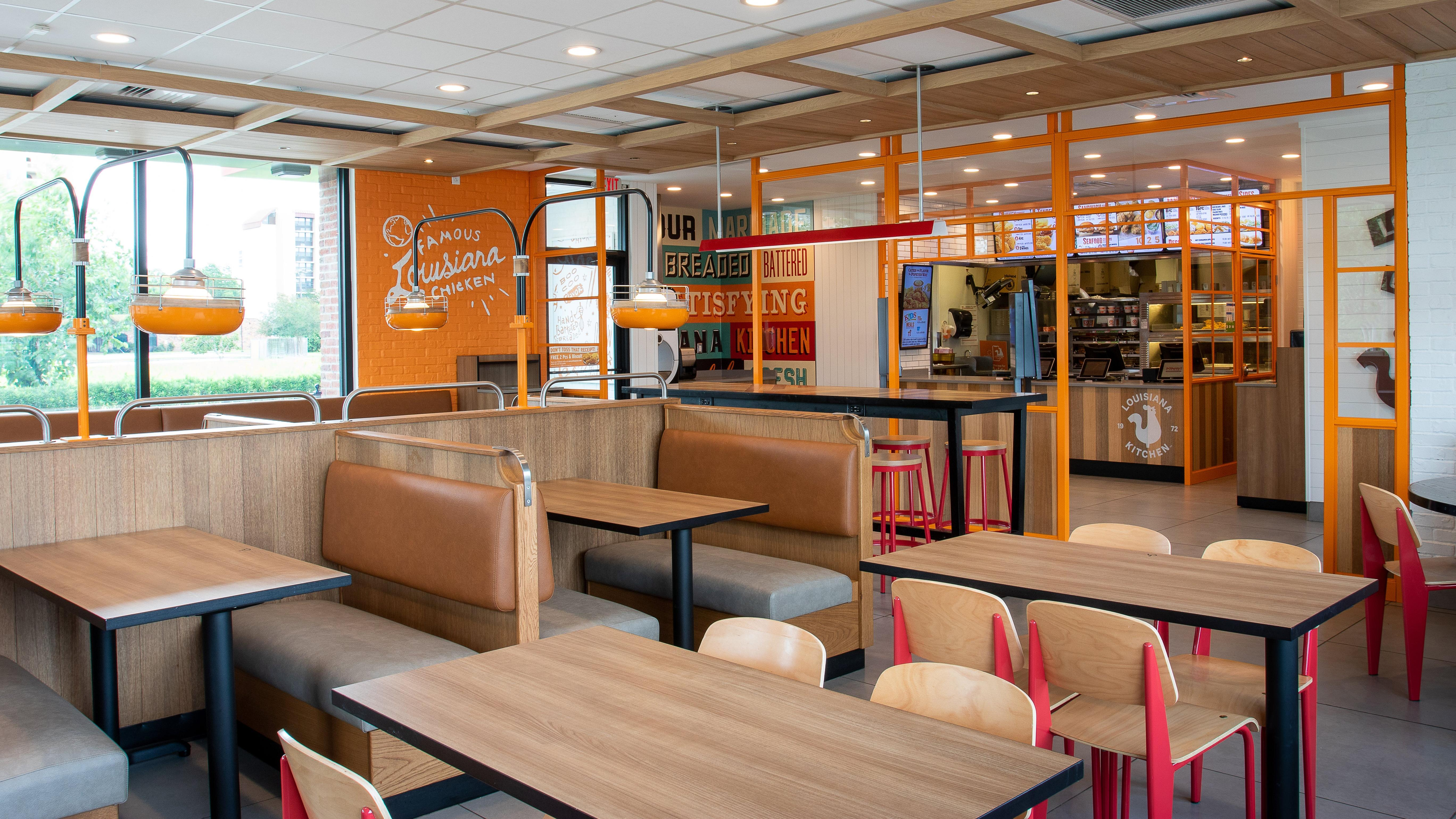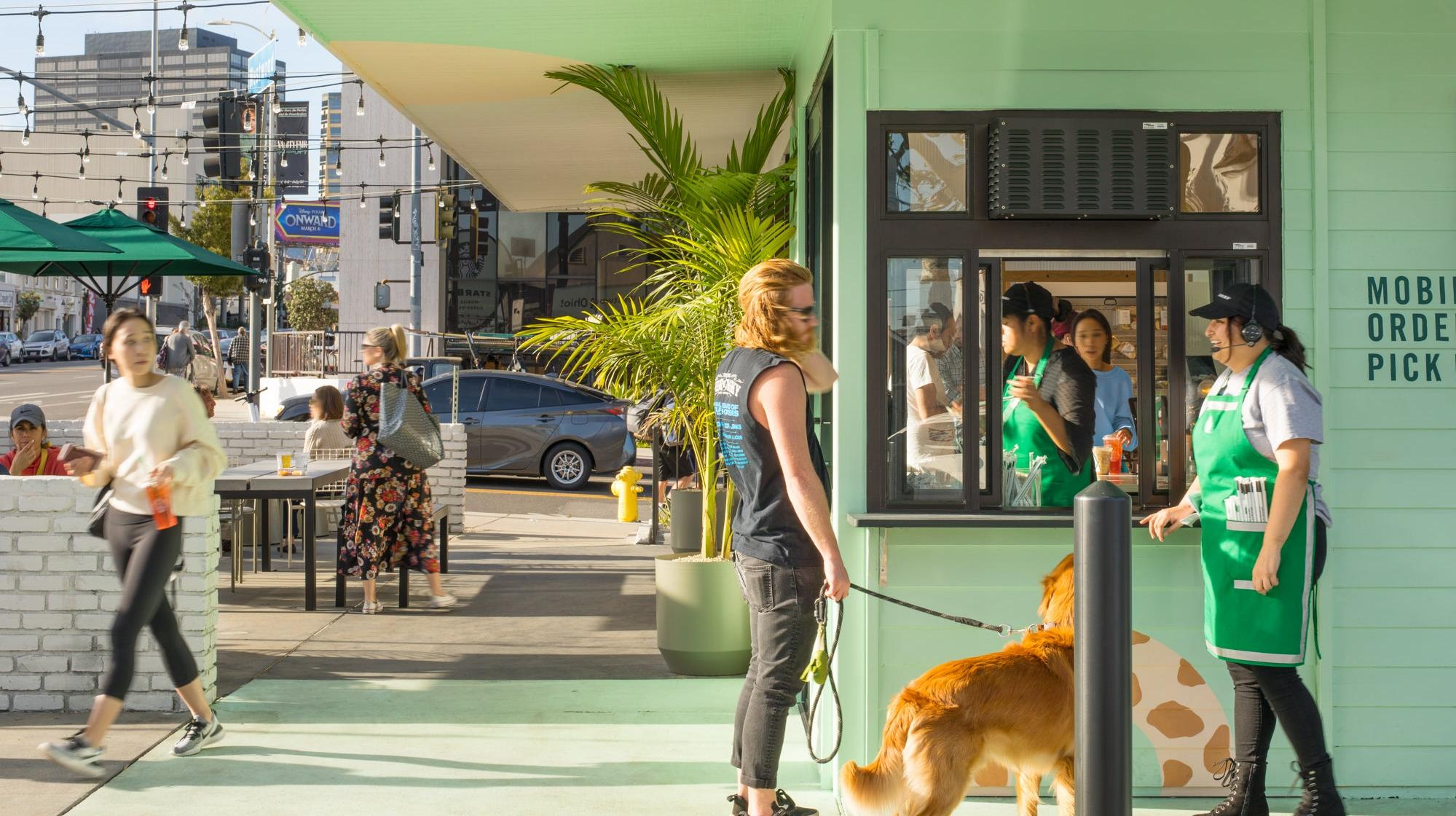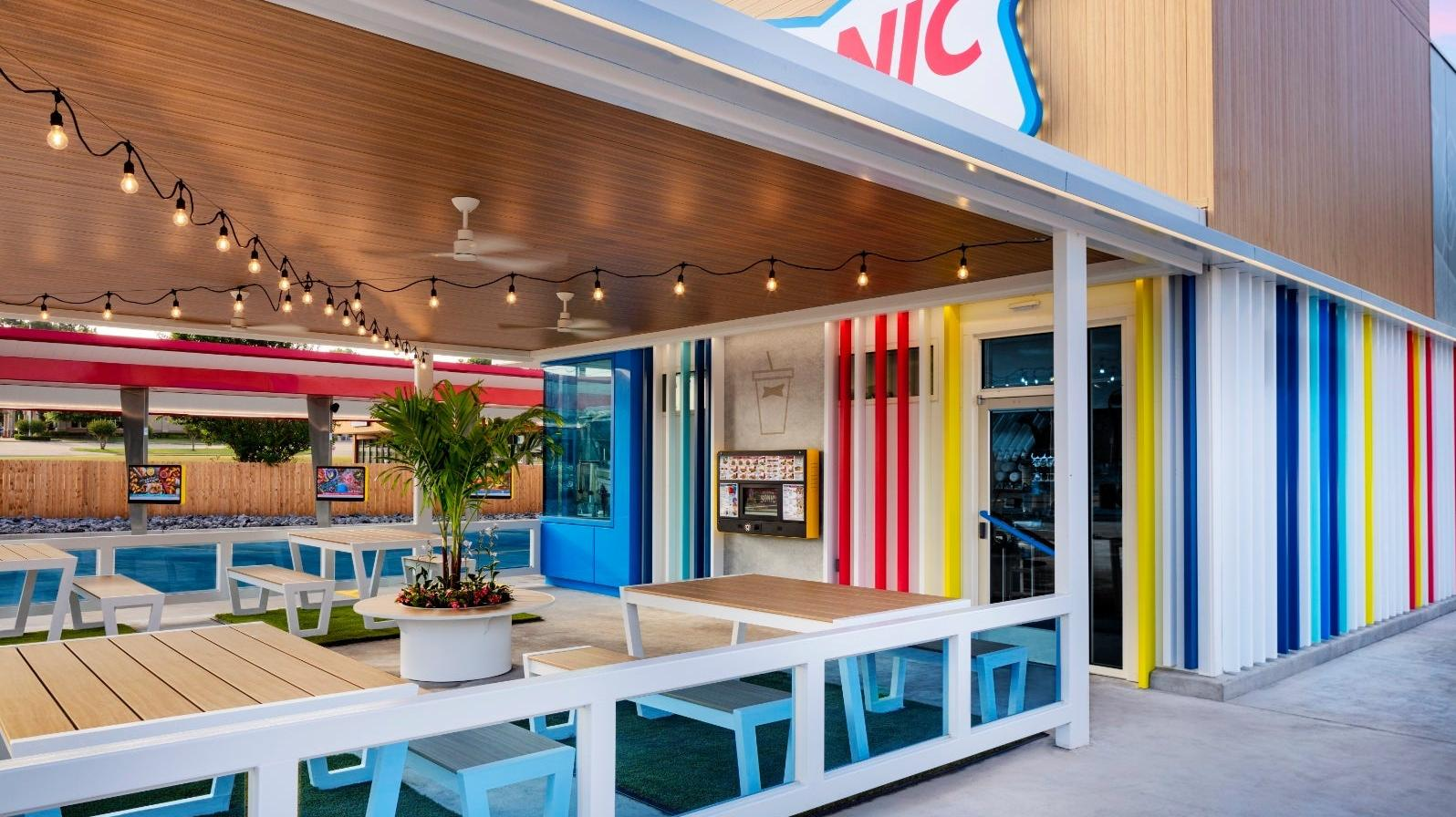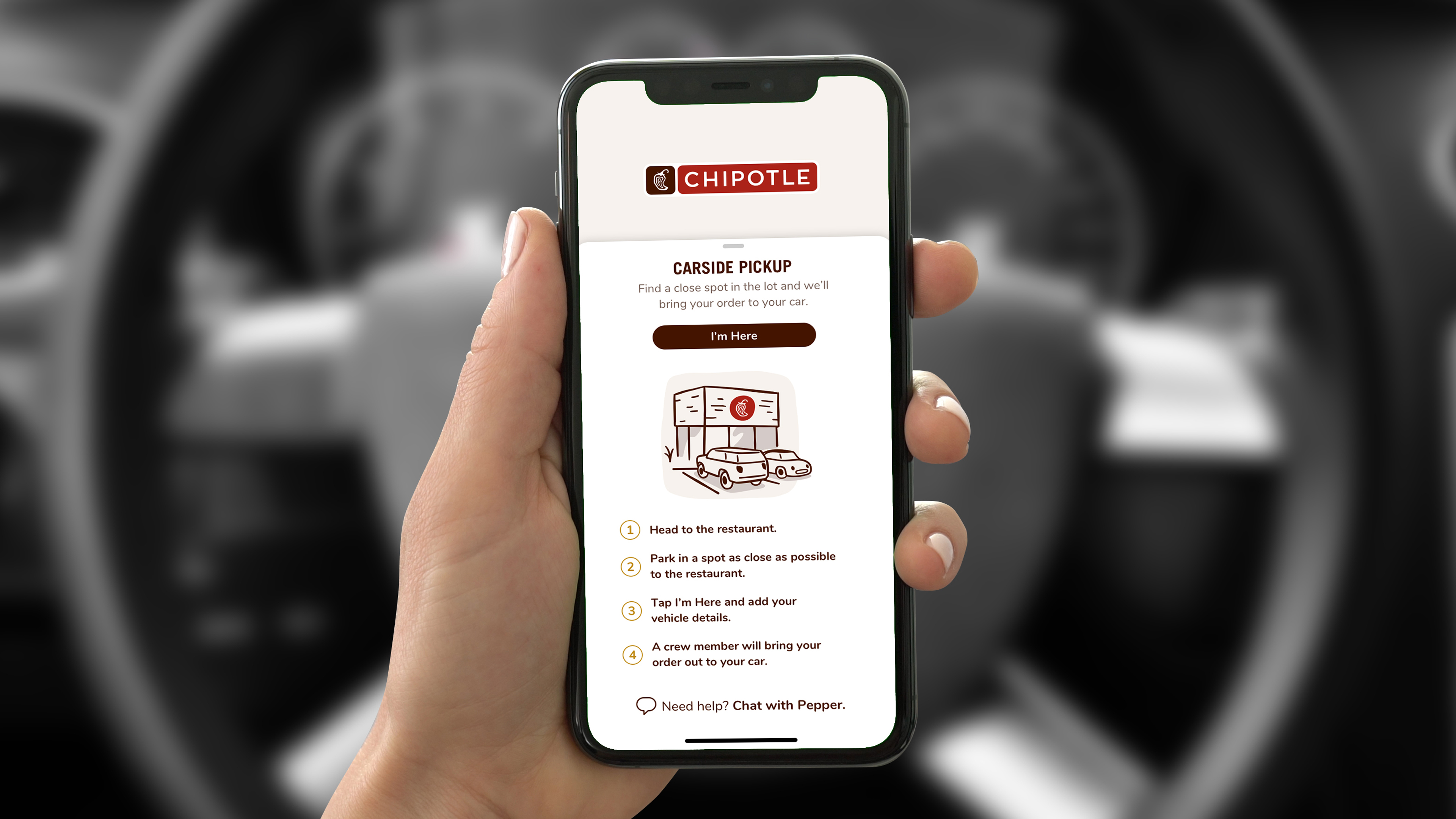The Future Of Fast Food Can Be Found In These 5 Restaurant Redesigns
How cars, tech, and the endless quest for convenience will shape the industry going forward
The first time I heard about someone using a mobile app to order Starbucks, I laughed out loud. "You already have to go into the store to pick it up," I snorted, "so why not just walk in and order?" Just a few years later, though, I must eat my words—along with plenty of scones that I've earned from my own mobile Starbucks Rewards account. Technology moves quickly from being a novelty to a necessity, and the fast food industry is determined to stay ahead of that curve.
What will the future hold for fast food? We take a look at the last couple years' worth of restaurant innovations to determine where exactly things are headed.
Popeyes Louisiana Kitchen
Hot on the heels of its 2019 Chicken Sandwich To End All Chicken Sandwiches, Popeyes decided in summer 2020 to freshen up its dining rooms and strengthen its brand, unveiling a bright, sleek new restaurant design.
The updated restaurants have kind of an industrial-chic feel to them, a nod to the materials used in the St. Charles Streetcar in New Orleans, coupled with "personality and artwork [that] celebrate the creole heritage that's been passed down over generations." Some might find it colder than the fast food dining rooms of yore, but it seems to signal the industry's preference for sleekness over sentimentality.

Similarly, the previously jaunty font of its logo was also streamlined, leveling out the lettering and losing its serifs so that the signage looks a little more like a startup that happens to fry chicken on the side. Or, as the press release put it, "The old playful Popeyes logo has been matured with a contemporary typeface that elevates the brand and reflects the culinary depth that goes into making the Popeyes signature foods." You hear that? No more fun! This is a Popeyes, for god's sake—it's serious!
Starbucks
Starbucks never does anything halfway, does it? Within the same month of opening a new 35,000-square-foot Roastery location on the Magnificent Mile in Chicago, Starbucks also unveiled its first Mobile Pickup cafe in New York's Penn Station, a scaled-down concept that involves no in-person ordering, no lines, and, ideally, no waiting. You place your order on the Starbucks app, then come collect it at the station—no pesky human interaction required.
Whether or not this sort of Starbucks location will become the norm is difficult to predict. On the one hand, these sorts of outposts require less real estate and are cheaper to operate, and Starbucks' larger, more inviting locations that act as a "third place" at which to gather have been hamstrung by the pandemic. But on the other hand, Starbucks planned these Mobile Pickup locations for busy metropolitan areas like train stations, and with people increasingly working from home, such outposts might not see the traffic they anticipated.
Right now, Starbucks appears to be splitting the difference; in a 2020 press release, it announced plans to expand both Mobile Pickup locations and drive-thru options at existing cafes. By the time people feel comfortable working in coffee shops again, will there be Starbucks interiors to return to?
Sonic Drive-In
"Summertime is a feeling, not just a season." This is the language of the press release that announced the dawn of a new era for Sonic Drive-In last year, with a fresh restaurant redesign meant to evoke all the carefree feelings of summer. The updated concept has pops of red, blue, and yellow, and the low-slung building aims for a sense of midcentury nostalgia.
Most notably, though, the new drive-in concept isn't just catering to cars; it has an outdoor seating area complete with string lights and lawn games, designed for gathering. This might keep the restaurant more top-of-mind for families and groups of diners that want a social experience rather than one in which they're confined to their cars. With all the major players in fast food expanding their drive-thru lanes, maybe Sonic is betting that some of them might want to stretch their legs once in a while?
Chipotle
It seems like with every new innovation, Chipotle is trying to keep us as far from its dining rooms as possible. In 2018, the chain started testing Chipotlanes, a drive-thru at which no one can actually place an order—it only functions as a spot for customers to pick up the mobile order they've already placed within the app. Then, in late 2019, on the heels of similar innovations at Starbucks, Chipotle announced it would be testing walk-up windows for mobile order pickup in major cities such as Chicago, Phoenix, and San Diego—it's like a Chipotlane, but a sidewalk!
And now, in 2021, Chipotle is testing carside pickup at its California locations. The process works like this: Place your order in the Chipotle mobile app and select "Carside Pickup" at checkout. Drive to Chipotle and choose a parking space as close to the restaurant as you can (but don't exit that vehicle, you hear me?!). Once you've arrived, tap the "I'm Here" button within the app, and enter helpful information like your car's make and color. A Chipotle employee then brings your order to your car. The future is here!
It's all part of Chipotle's apparent desire—and Chipotle is certainly not alone in this—to make all customer/restaurant interactions as faceless and tech-based as possible.
"As our digital business evolves, we are continuing to explore ways to remove friction and increase access to our real food," said Chipotle Chief Technology Officer Curt Garner in a press release. "Chipotle Carside unlocks a new, highly convenient pick up experience for guests from our restaurants' parking lots." Perhaps the "friction" he's talking about is customers ever having to enter a restaurant again?
Taco Bell
Taco Bell's new restaurant design is so confident in itself, it has a bold new name to go with it: Taco Bell Defy. According to a press release, the concept features four (!!) drive-thru lanes, three of which will only handle mobile pick-ups and/or delivery order pickups—that is, orders being picked up by the drivers for third-party delivery services. It's striking that the rise of delivery services like DoorDash are being accommodated in the very design of the restaurant, but it's an indication of just how much profit Taco Bell generates by working with such services.
Taco Bell Defy also promises to deliver orders "seamlessly and in a contactless manner via a proprietary lift system," while "two-way audio and video technology lets customers interact directly with the team members above in real time." Sounds like your food descends to you from on high. For those who already considered Taco Bell to be a bite of heaven, this is a little on the nose.
Ultimately, though, the flashy design of the Taco Bell Defy is all built around one goal: increased speed. The faster your order is processed, the faster you leave, and the quicker you get replaced by an additional customer. Turnover is a beautiful thing, isn't it?
